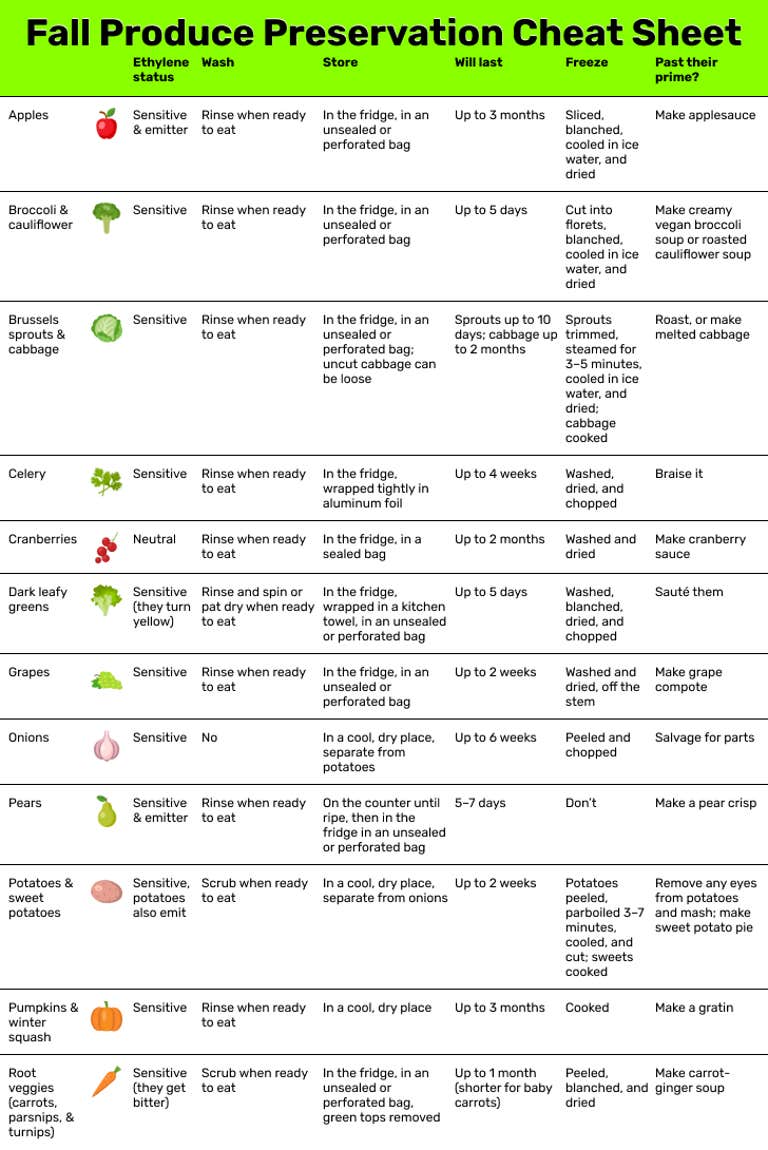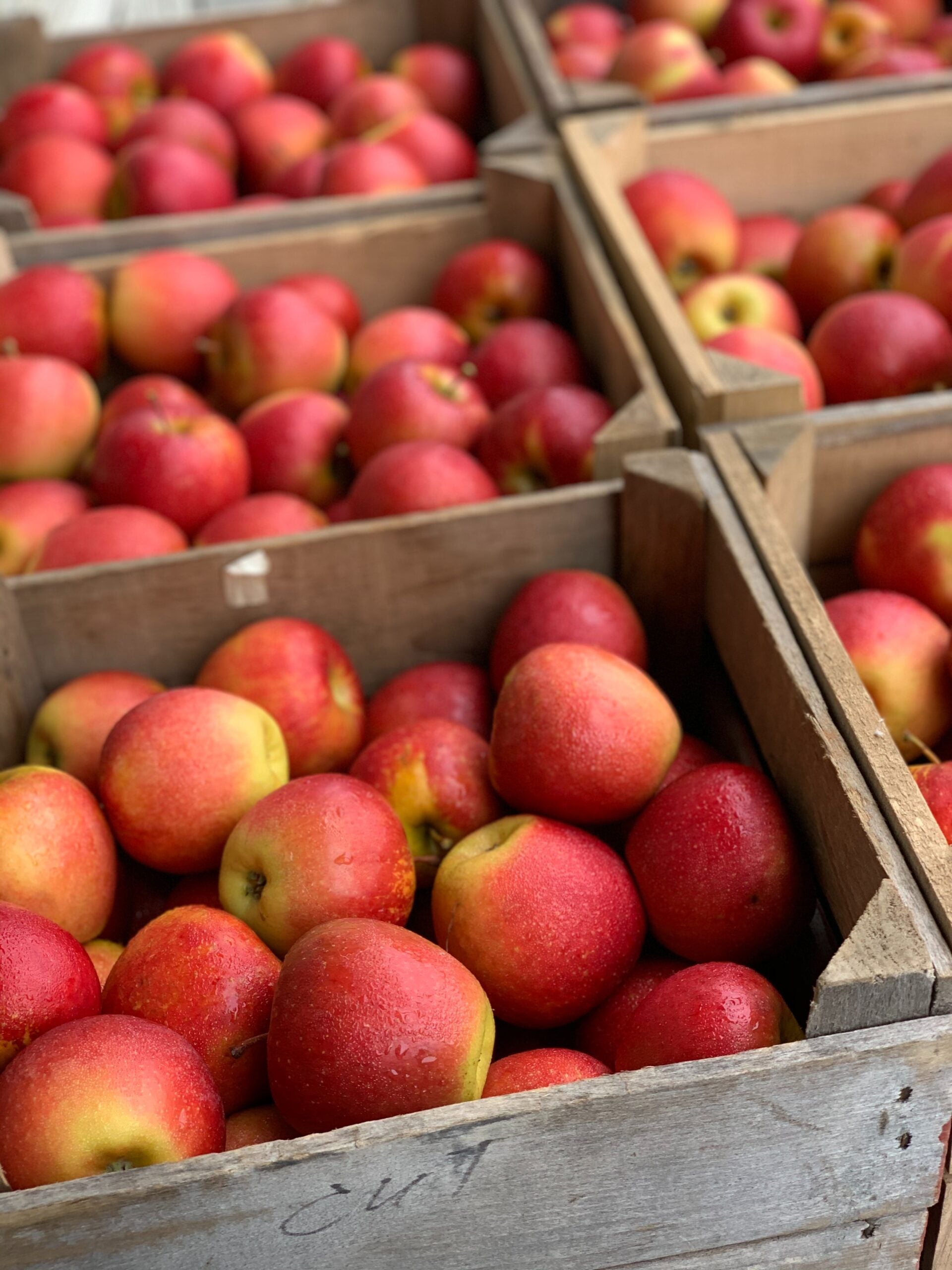When your potatoes sprout beady little eyes that stare at you in judgy condemnation—Why didn’t you cook me last week!?—you accept your guilt and toss them. While cold-weather produce like taters, apples, and carrots are generally heartier than summer’s delicate fare, that doesn’t mean they don’t need a little attention to avoid spoilage. The USDA estimates that Americans waste 164 pounds of food per person each year—and fresh produce makes up about 22% of it. Keeping all that food out of the bin often boils down to knowing the ideal way to store, wash, and preserve various fruits and veggies.
One key to making fall’s fare last as long as possible is protecting it from moisture, which can speed up deterioration. That’s why, in most cases, it’s best to wait until right before eating it to wash it off. Microbes and the gas ethylene are also common foes. Some flora emit the gas, while others will ripen and rot quickly if it’s around. The trick is to keep the emitters away from the more sensitive foods—whether in a different crisper drawer in the fridge or a separate bowl on the counter.
Here’s a rundown of everything you need to know about taking care of fall’s goodies.


